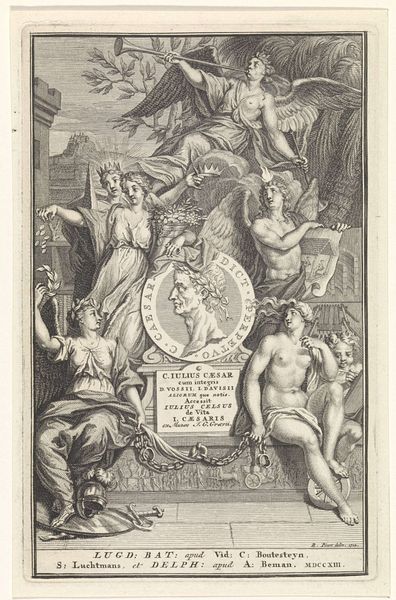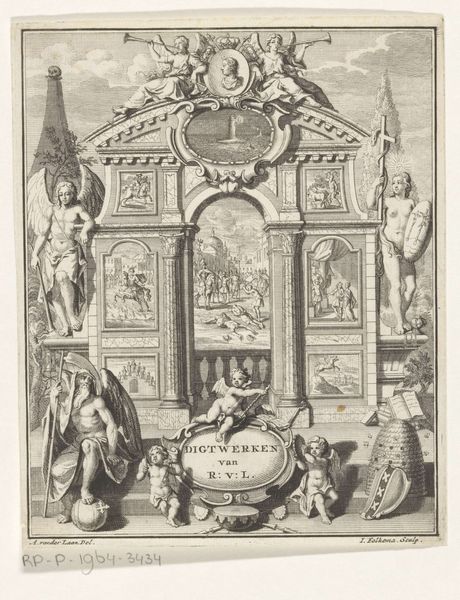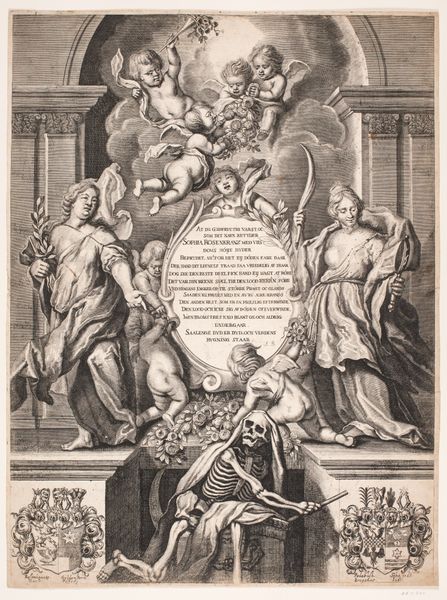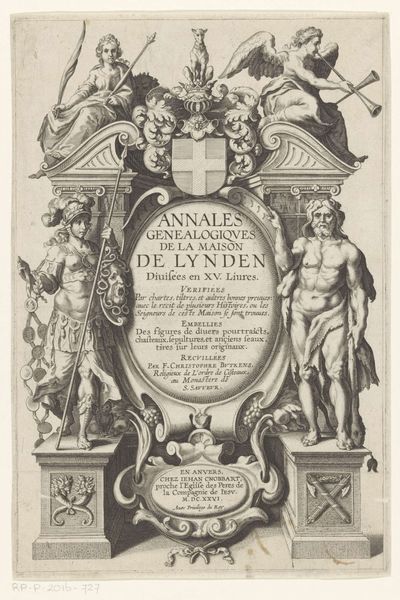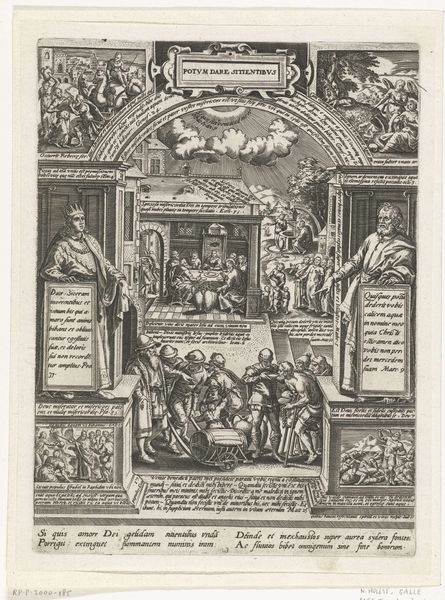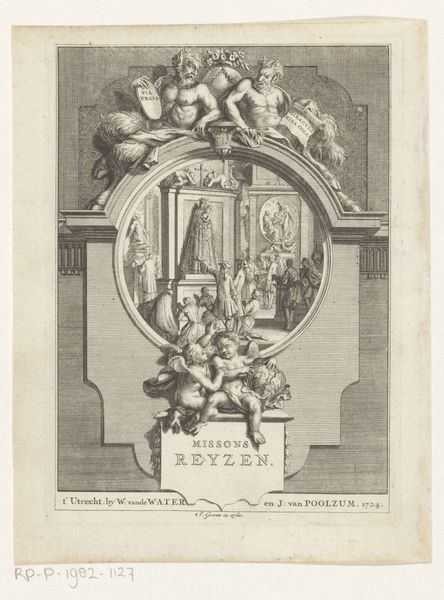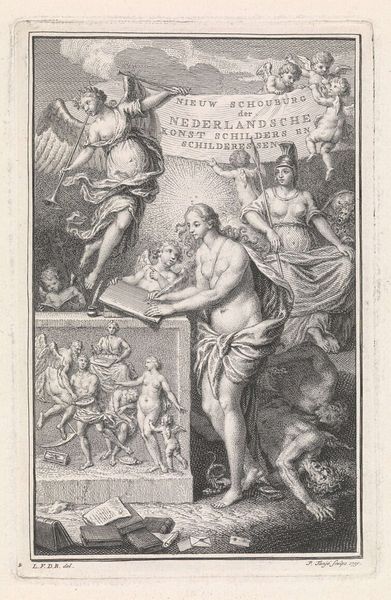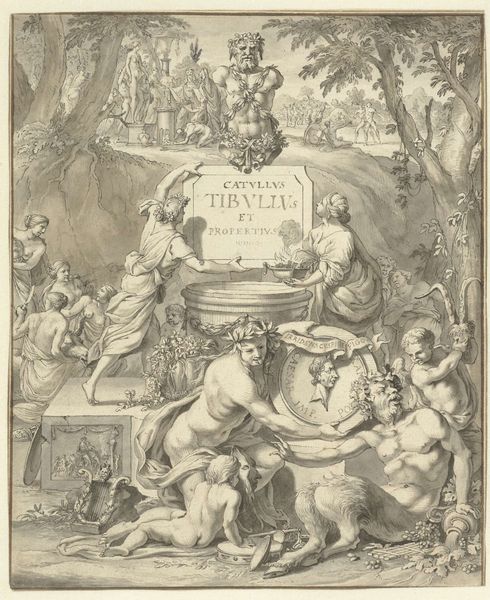
Titelpagina voor Omnium pene Europae, Asiae, Aphricae, Americae gentium habitus 1577
0:00
0:00
abrahamdebruyn
Rijksmuseum
graphic-art, print, engraving
#
portrait
#
graphic-art
# print
#
old engraving style
#
figuration
#
11_renaissance
#
pen-ink sketch
#
line
#
pen work
#
northern-renaissance
#
engraving
Dimensions: height 160 mm, width 114 mm
Copyright: Rijks Museum: Open Domain
Curator: Abraham de Bruyn created this elaborate title page for a book of equestrian arms from across the globe back in 1577. It’s an engraving, part of the Rijksmuseum's collection. My initial sense? Controlled chaos. The frame is classical, almost stoic, but it's bursting with figures—centaurs, gods, horsemen. A very dense composition. Editor: Absolutely. The classical architecture provides a stable foundation, yet the mythical and martial figures create a dynamic tension. It feels representative of its time, a very humanistic moment where classical ideals were being used to process an expanding world. Those figures on horseback, literally astride different cultures, speak to that moment of encountering the 'Other'. Curator: Precisely! Consider the centaurs—beings caught between man and beast, symbolizing a sort of liminal space. They straddle the upper register of the title page, literally mediating between worlds. And the central text, the title, is framed by muscular, godlike figures representing perhaps strength or the taming of nature. It’s a careful ordering of perceived chaos. Editor: And the equestrian theme, recurring with the horsemen below flanking a small inset image. Equestrianism carried such weight – military prowess, aristocratic bearing, power and control. To present the customs from Europe, Asia, Africa and America in this framework isn't simply descriptive, it's implicitly making a statement about their standing relative to one another, under the guise of 'equitandi ratio'. Curator: You make an astute point about that "equitandi ratio," the manner of riding, subtly ranking cultures based on European sensibilities. Yet the inclusion of diverse figures, though viewed through a European lens, hints at the era’s burgeoning curiosity and expansion of awareness beyond its traditional borders. This is a period when the known world was rapidly expanding. Editor: A visual rhetoric typical for early modern attempts to catalogue, categorize, and control narratives around global encounters. The book itself would have been used to visually consume distant lands, reducing their rich diversity into digestible, and manageable imagery for the European gaze. Curator: It’s fascinating how much a single title page can reveal about a culture's self-perception and its attitude towards the wider world. It prompts us to see how symbols, even when seemingly straightforward, can conceal layers of complex meanings. Editor: Indeed. An exquisite artifact offering insights into the socio-political climate and aesthetic conventions during this crucial era of global engagement.
Comments
No comments
Be the first to comment and join the conversation on the ultimate creative platform.
